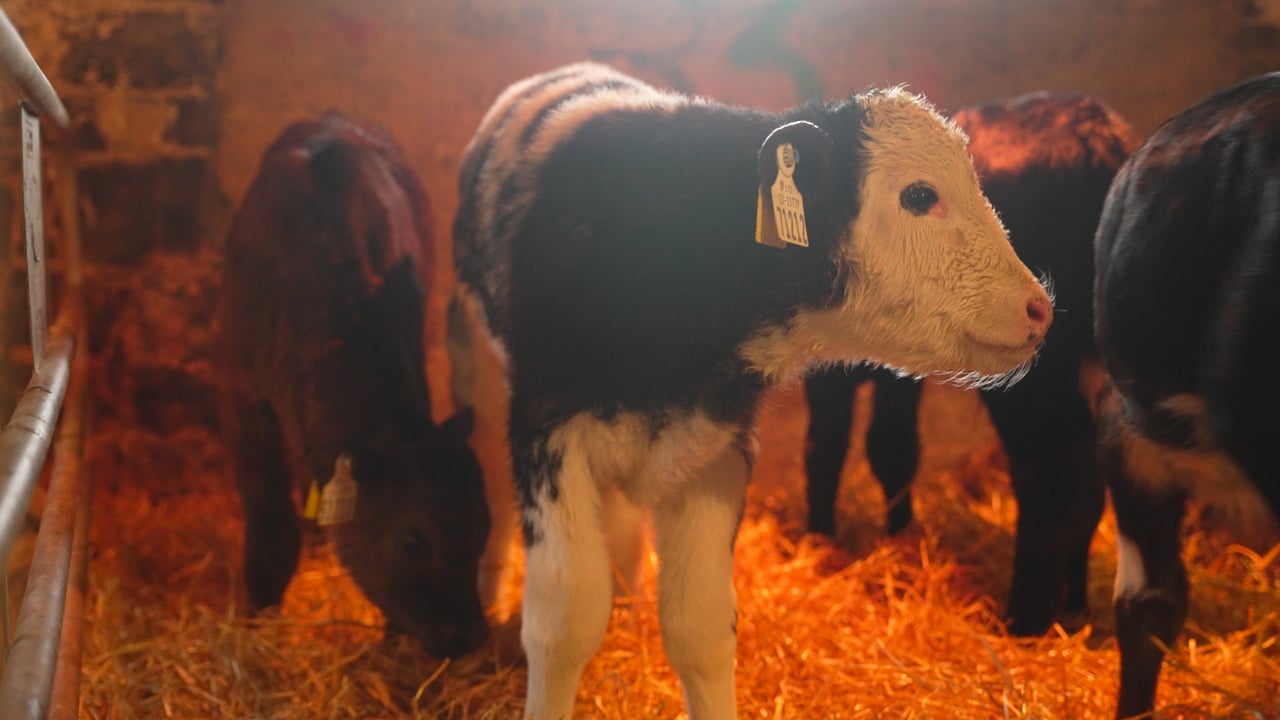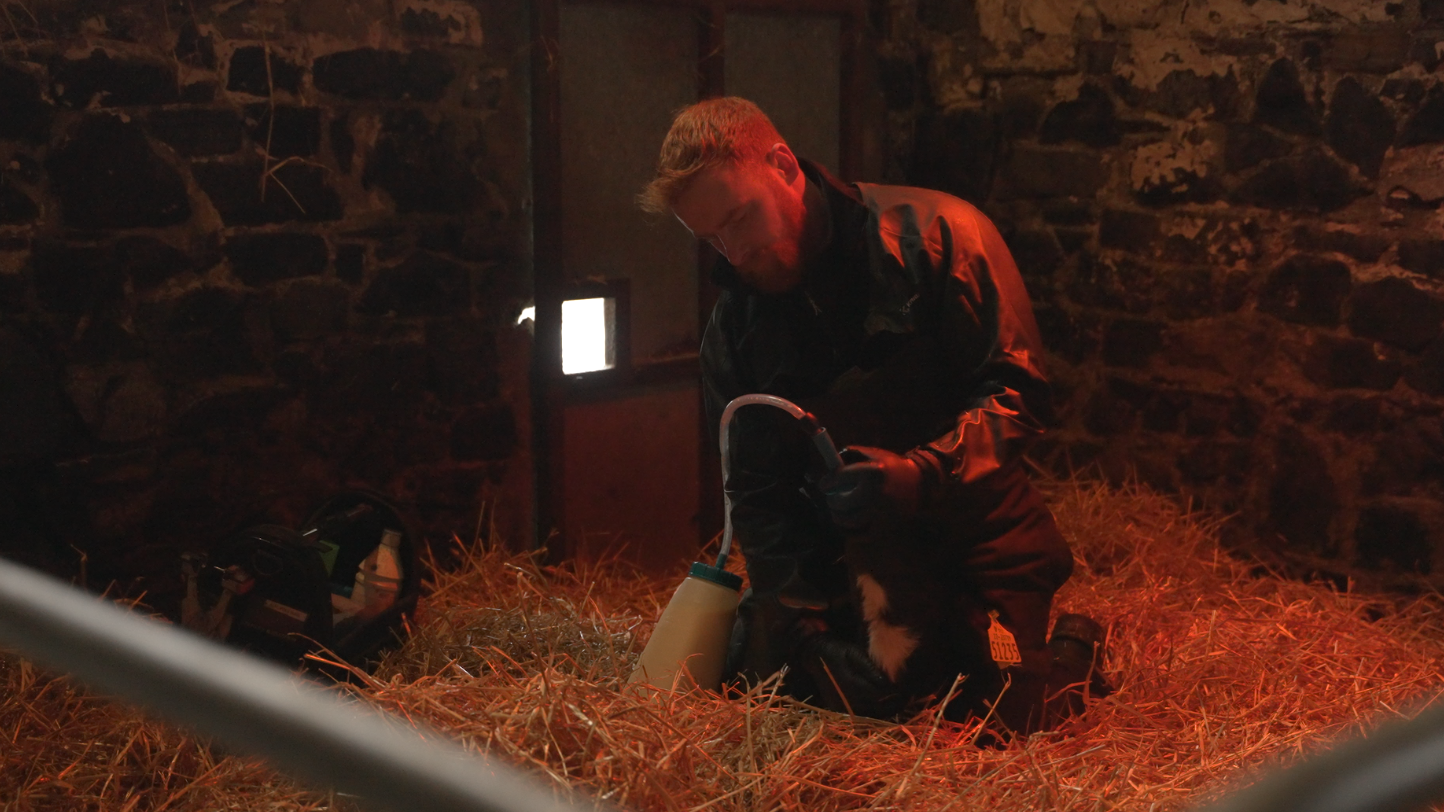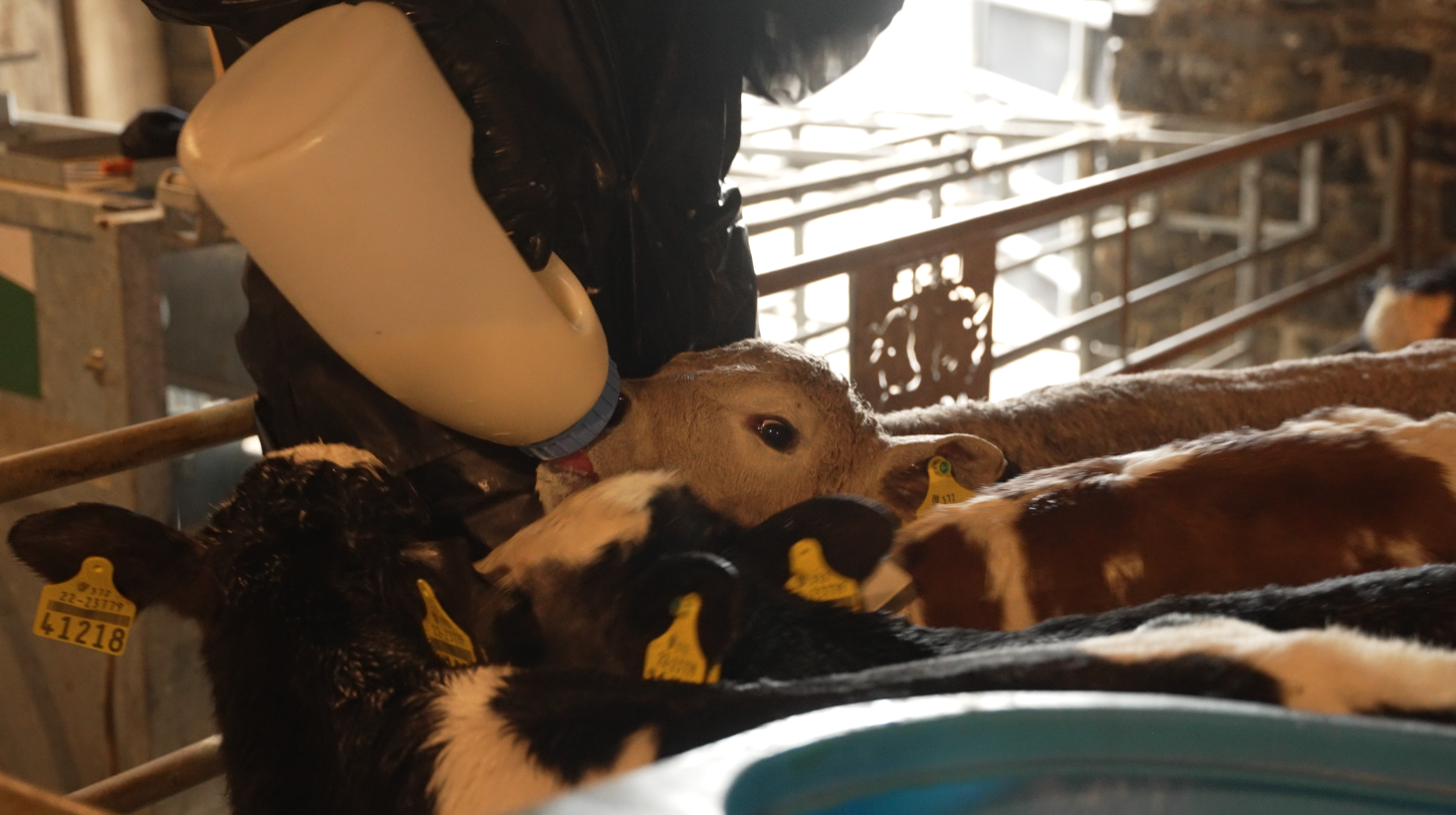Farming for the Future Series


Farming for the Future: Rearing 275 calves in a 'nursery' shed
Lakeland Dairies, Lakeland Dairies Agribusiness, and Agriland Media have teamed up for a brand new series, 'Farming for the Future' going behind the scenes on a farm with a spring-calving herd to showcase the busy, but rewarding, nature of dairy farming.
Eoin Corrigan has 275 cows to calve down this spring and had 50% of the herd calved in just two weeks, using a nursery shed to get calves sucking, trained and in good health in seven days.
At this stage of calving, cows have a dry matter intake (DMI) of about 15kg DM, made up of 2kg of silage at night, 4kg of an 18% protein nut and 9kg of grass, consisting of two to three hours of grazing in between each milking.
Eoin aims to have cows out full-time as soon as conditions allow but admits that the two- to three-hour allocations work well as he is achieving good residuals, while the cows are getting 90% of their intake in three hours towards what they would intake in 12 hours.
There are a lot of calves on the ground on the Corrigan farm and calf care and health is a huge element of the success of the farm, with a lot of time and investment allocated to ensure a quality, healthy calf for either replacements or to sell at three weeks of age.
Eoin has converted an old, tight farm building into a lovely snug and warm spot for young calves to be looked after for the first seven days.
The name given to the shed is 'The Nursery', and consists of seven pens with each pen holding up to seven calves. During the calving season, Eoin usually expects seven cows to calve each day and are moved into the pen once they are licked.
The system works well for the farm as each day seven new calves come in and seven day-old calves get moved out into another calf area.
Each pen has an infra-red heat lamp hanging above the calves and they are bedded with about 1ft of straw, making it a perfect environment for calves in early-life.
The heat lamps and straw ensure that the young calves are not using their energy to keep themselves warm, but rather to build up immunity and start growing.
The calving house is just next door to the nursery which makes it an easy transfer from one area to the next and the cow and calf are left together until the calf is fully licked.
The calf is then tagged and the navel is sprayed with iodine before the calf is moved into the nursery. Once the calf is in the nursery, she will receive about 3-4L of colostrum, depending on the size of the calf, within the first two hours of life.

Eoin makes sure to test the colostrum that he is feeding the new-born calves with a brix-refractometer to ensure he is not feeding anything less than 22% colostrum.
Good quality colostrum is stored in reserve in the dairy, as he finds that sometimes the mother of the calf will produce very little during her first milking or it may be of inadequate quality.
Eoin looks after all the stomach tubing of the calves and Eimear Leonard, the farm's calf rearer gets them all going on the teat feeders after that.
Eimear has the difficult job of training calves to drink and aims to get them up to at least 5L/day across two feeds as quickly as possible.
The calf rearer said she was "railroaded" into doing the job and despite having no background in agriculture, with Eoin's guidance, Eimear has been doing a fantastic job rearing calves for the last four years and "about 1,000 calves later".
Eimear highlighted her passion for the job, saying she often goes home thinking about the calves, which beckon her back into the yard to make sure they are fully fed and in good health.

She said that there is a certain level of patience needed for calf rearing and that young calves need a bit of time and care to get them drinking, and that's exactly what she ensures is happening on the farm.
By the time the calf leaves the nursery and moves into the next shed, they want the calf drinking 6L/day when they are introduced to calf pencils and hay.
In the next shed, the calves will be introduced to roughage and even though they won't eat much of it, the sooner it is put in front of them, the sooner they will start eating it.
Tune in to tomorrow night's episode, 'Farming for the Future:A Sustainable Future‘, at 7:00p.m where Eoin will discuss where the calves go after the nursery shed and what the dairy industry will look like for farmers in the future.